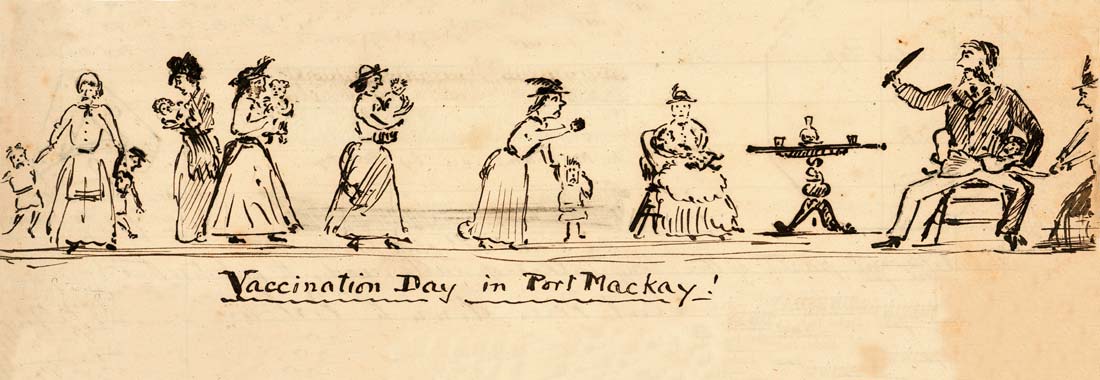 'Vaccination Day in Port Mackay!', 1877
'Vaccination Day in Port Mackay!', 1877
TLF ID R9199
This black-and-white pen-and-ink sketch depicts vaccinations against smallpox in Mackay, Queensland, in 1877. In the sketch the local public health officer, who appears to be shouting, wields a large knife and is about to vaccinate a fearful child on his lap. The child's mother holds the child's arm while it screams. A line of women accompanied by children, some unwilling, wait their turn. One woman is leaving after the vaccination. Another woman shakes her fist at the officer.
